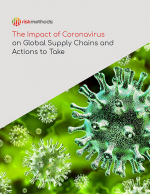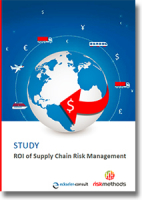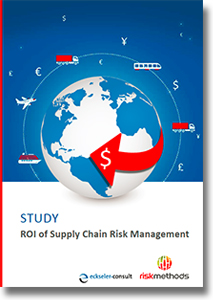STUDY: ROI of Supply Chain Risk Management
The aim of this study is to investigate the determination of the return on investment (ROI) of a software-supported solution for supply chain risk management.
Determining the return on investment represents an important aspect when deciding on a professional, automated and software-supported supply chain risk management (SCRM) solution.
The study has detailed information on how; savings through process efficiency and avoidance and reduction of crisis costs provide the source for individual potentials that can be evaluated in monetary terms, and offer a tool for individual determination of ROI as a no-charge download.
Results
For a typical medium-sized manufacturing company with revenue of 200 million USD, the actual savings through process efficiency alone quickly amount to considerably more than 200,000 USD per annum.
In particular, these hard-to-calculate savings help to justify the investment decision, and ensure budget neutrality as early as the first year of acquisition.
A significant benefit of SCRM is generated by the immense potentials through risk prevention measures: Losses of up to 7.5 % of revenue (approx. 15 million USD in our sample company) can be avoided by means of risk prevention, or can at least be considerably reduced in a crisis situation.
Values such as these assist in deciding the success of an entire fiscal year, as well as the existence of a company.
Companies derive additional financial room to maneuver and released personnel capacity to be able to increase ROI through risk prevention measures, in addition to acquisition of methods, tools and know-how.
Success factors
Successful companies with professional SCRM methodologies, such as the world’s largest automobile component supplier BOSCH, the leading technology group Siemens, or the most profitable European telecommunications group Swisscom agree that they have placed a sharp focus on common selected criteria from a process, organizational and tools perspective.
This includes:
- Integrated methodology – coverage of all types of risks
- Clear responsibility of SCRM in an organizational unit
- Integration of all internal stakeholders in the cross-functional risk management process
- Use of a common IT-supported platform
- Supply chain transparency in the relevant tiers in each case (n-tier SCRM)
- Management of measures as an integrative component
- Use of all available structured and unstructured data sources
- Transformation of information into relevant, dependable intelligence
- Components of risk intelligence within the supplier network
- Support for different application cases for cross-functional partners
- Predictive analytics for risk prediction and prevention
What’s Related


Favorites





